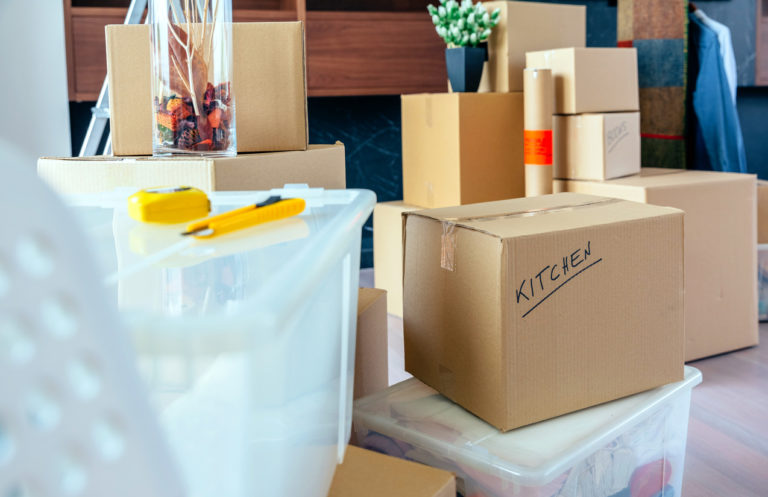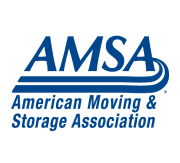Optimizing Space in Your Storage Unit
When it comes to utilizing a storage unit, making the most of the available space is essential. Properly organizing and maximizing the storage space not only allows you to fit more items but also ensures easy access and retrieval when needed. Whether you’re using a storage unit for short-term or long-term purposes, these tips will help you optimize the space and create an efficient storage system.
Assess and Plan
Before you start packing your belongings into the storage unit, it’s important to assess your storage needs and plan accordingly. Take inventory of the items you plan to store and categorize them based on their size, fragility, and frequency of use. This will help you determine the appropriate storage containers, shelving units, or furniture placement within the unit. Consider creating a floor plan or layout for your storage unit. This will help you visualize the space and allocate specific areas for different categories of items. Having a plan in place before you start packing will save you time and effort in the long run.
Use Uniform Storage Containers
Investing in uniform storage containers is key to optimizing space in your storage unit. Avoid using odd-shaped or mismatched boxes, as they can create gaps and waste valuable space. Opt for sturdy, stackable containers that are of consistent sizes. Clear plastic containers are particularly useful as they allow you to see the contents without opening each box. This makes it easier to locate specific items when needed. Label each container clearly with its contents, using a waterproof marker or pre-printed labels. This will further facilitate easy identification and retrieval of items.
Maximize Vertical Space
Utilizing the vertical space in your storage unit is crucial for efficient storage. While stacking boxes is a common practice, there are additional strategies to maximize the vertical space:
1. Install Freestanding Shelving: Consider installing freestanding shelving units to take advantage of the vertical height. Place heavier or less frequently accessed items on the lower shelves, while keeping lighter or frequently used items within easy reach on higher shelves.
2. Use Pallets: Elevating your items off the floor using pallets not only protects them from potential moisture but also creates additional storage space underneath. Pallets can be especially useful for storing furniture, appliances, or boxes that are not as susceptible to damage.
3. Utilize Wall Space: Install wall-mounted hooks, racks, or pegboards to hang items such as bicycles, tools, or sporting equipment. This frees up valuable floor space and keeps these items easily accessible.
Utilize Storage Accessories
To further optimize the space in your storage unit, consider utilizing various storage accessories designed to maximize efficiency:
1. Cube Organizers: Cube organizers with multiple compartments are ideal for storing smaller items or items that would benefit from compartmentalization. These organizers can be placed on shelves or stacked on top of each other.
2. Hanging Garment Bags: If you’re storing clothing or delicate fabrics, hanging garment bags are an excellent choice. They protect clothes from dust and creasing while utilizing vertical space.
3. Drawer Units: Small drawer units or plastic storage drawers are great for organizing and storing smaller items like accessories, office supplies, or tools. These units can be stacked or placed on shelves for easy access.
Strategic Packing
When packing your belongings into the storage unit, there are a few strategic techniques to consider:
1. Tetris-style Packing: Similar to the popular game, aim to fit items together in a puzzle-like manner. Fill gaps between larger items with smaller boxes or items that can be easily stacked. This ensures that every inch of space is utilized effectively.
2. Disassemble Furniture: If possible, disassemble larger furniture items such as tables, bed frames, or shelves. This not only saves space but also allows for better utilization of vertical height. Keep all the necessary screws, bolts, and components in labeled bags or containers, and attach them securely to the corresponding furniture pieces. Wrap each disassembled piece in furniture blankets or bubble wrap to protect them from scratches and dust.
3. Utilize Hollow Furniture: Utilize the empty spaces within furniture items such as dressers, cabinets, or wardrobes. Fill drawers and shelves with smaller items, maximizing every nook and cranny. This not only optimizes space but also keeps similar items together for easy retrieval.
4. Pack Smartly: When packing boxes, prioritize heavier items at the bottom and lighter items on top. This provides stability and prevents boxes from collapsing. Fill any empty spaces within boxes with soft items like linens, towels, or clothing. This not only helps prevent shifting during transport but also maximizes space within each box.
5. Leave Pathways: It’s important to leave clear pathways within your storage unit to ensure easy access to all items. Plan for aisles or walkways that allow you to reach items in the back or middle of the unit without having to move everything around. Consider leaving a central pathway or space between rows of shelving units for better maneuverability.
Organize and Label
Efficient organization and clear labeling play a vital role in optimizing space and facilitating easy access to your stored items:
1. Categorize and Group: Group similar items together based on their category or usage. For example, keep seasonal clothing together, kitchen items in one area, and tools in another. This helps maintain order and makes it easier to locate specific items when needed.
2. Clearly Label Boxes: Clearly label each box with its contents and include a general description of the items. Use waterproof markers or pre-printed labels that are easy to read. Consider color-coding or using a numbering system to further streamline the labeling process. Maintain an inventory list or digital spreadsheet to track the contents of each box.
3. Create a Map or Diagram: Take the organization a step further by creating a map or diagram of your storage unit. Mark the location of each category or section, including any shelving units or furniture placements. This visual representation will serve as a handy reference guide and help you navigate your storage unit more efficiently.
Regular Maintenance and Reassessment
To ensure ongoing optimization of your storage space, regular maintenance and reassessment are essential:
1. Periodic Decluttering: Schedule regular decluttering sessions to reevaluate the necessity of stored items. Dispose of or donate anything you no longer need or use. This not only creates additional space but also prevents unnecessary clutter from accumulating over time.
2. Rearrange and Reorganize: Every few months, take the time to rearrange and reorganize your storage unit. As your storage needs evolve, you may need to make adjustments to better accommodate new items or remove items that are no longer required. This allows you to continually optimize the space based on your changing needs.
3. Assess Efficiency: Periodically assess the efficiency of your storage unit’s layout and organization. Consider if there are any areas where space could be better utilized or if there are any items that can be repacked more efficiently. Make adjustments as necessary to ensure maximum optimization.
Conclusion
Optimizing the space in your storage unit is a key factor in making the most of your storage experience. By assessing and planning, utilizing uniform storage containers, maximizing vertical space, utilizing storage accessories, employing strategic packing techniques, organizing and labeling effectively, and conducting regular maintenance and reassessment, you can create an efficient and well-organized storage system. Remember, the key is to make the most of every inch of space available while maintaining easy access to your stored items. By implementing these strategies, you can optimize your storage unit’s capacity, reduce clutter, and save time and effort when retrieving items.
A well-organized and maximized storage space not only provides convenience but also ensures that your belongings are protected and preserved while in storage. Regularly evaluate and reassess your storage unit’s layout and organization to accommodate any changes in your storage needs. Decluttering and rearranging periodically will help you maintain an efficient storage system that meets your requirements. So, follow these tips and make the most of your storage space. By optimizing the space in your storage unit, you can have a well-organized, easily accessible, and efficient storage solution for all your belongings.
Georgetown Moving is a Full-Service Storage Company
Storage with Georgetown is easy. Here’s how it works:











